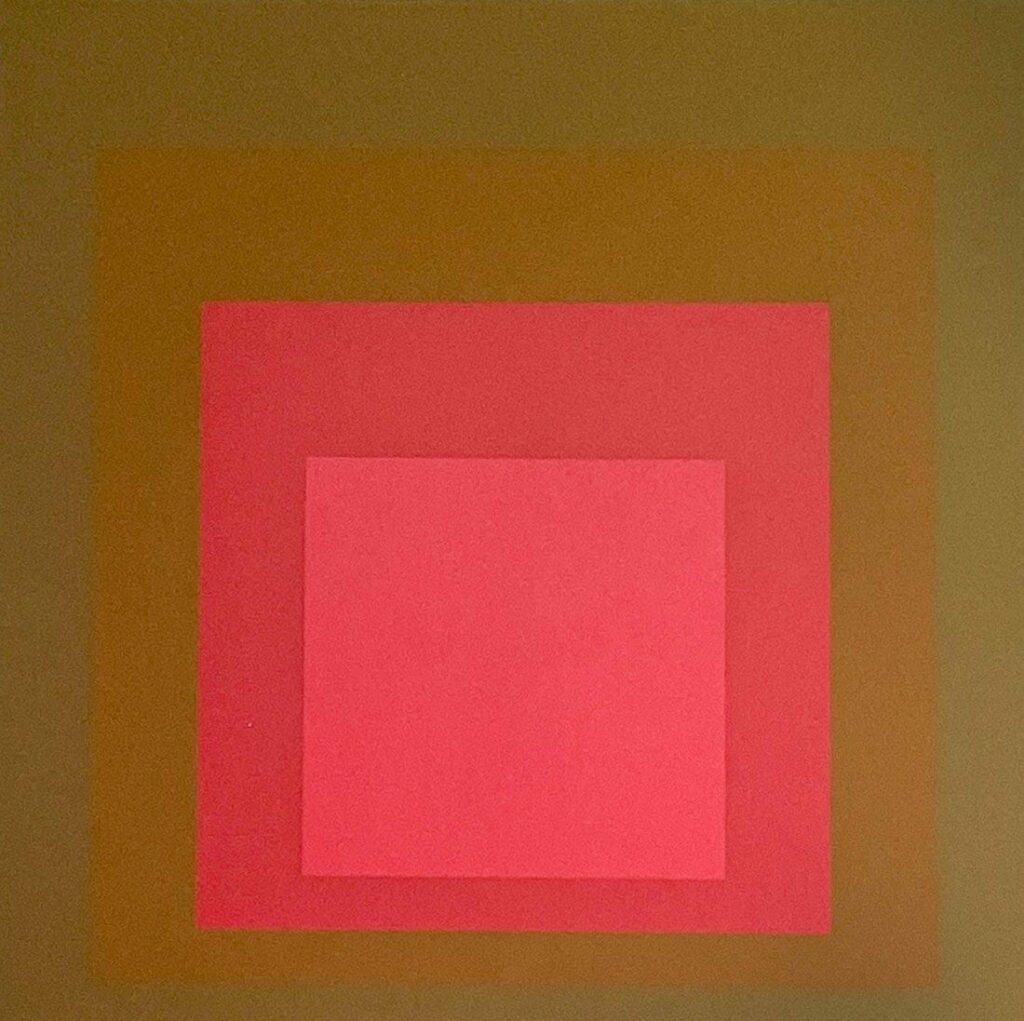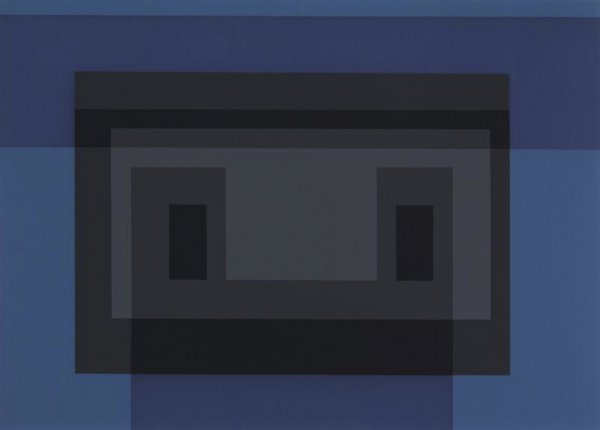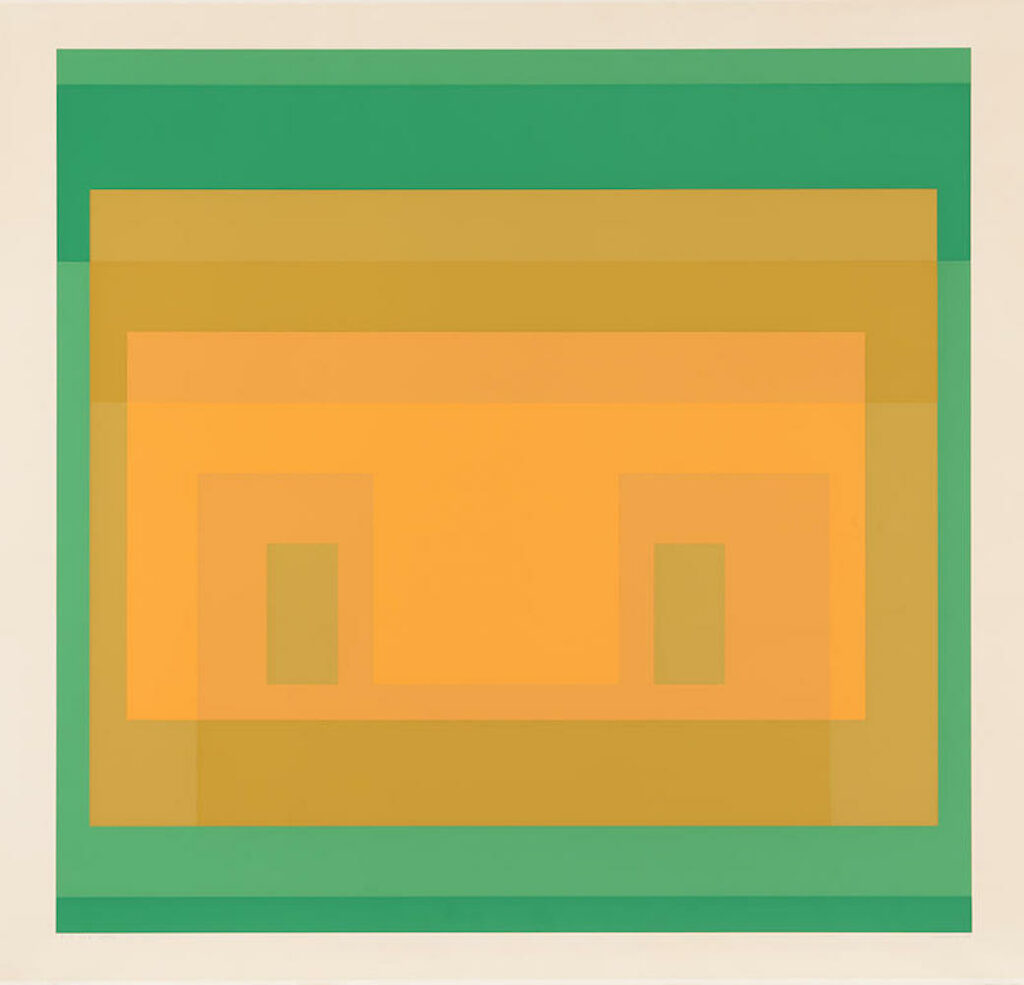Josef Albers Prints
Josef Albers produced many prints, his first prints be created in the late 1960s. Most of Josef Albers’ prints were screen prints though he also created etching prints, engraving prints, woodcut prints and lithography prints. All of Josef Albers prints are original prints as Albers saw printmaking as a distinct medium to create artworks.
Josef Albers (1888-1976) is undoubtedly more well-known today for his connections to the Bauhaus—where he studied and later taught from 1920 to 1933—than for his graphic work. He is also better known for his oil paintings from the Homage to the Square (1950–76) series. Over the course of his career, he did produce prints and drawings though. His graphic output spans from the stark blacks and whites of his early woodblock prints—with subjects inspired by the landscape of the coal mines in his hometown of Bottrop, in the former province of Westphalia (now in North Rhine-Westphalia)—to the vibrant colours and abstract geometry of his screenprints from the 1960s and 1970s. Albers, like so many other artists, found printmaking to be especially welcoming due to the cost-effective production required, the medium’s creative freedom, and the possibility for trial and error, experimentation, and innovation that it provides.

Albers had a strong appreciation for manual labour, artistic craft, and technique. He has always believed that technique is the cornerstone of a certain poiesis, or “creating,” or, to put it simply, art, which consists primarily in its how.
He was convinced that, in the case of art, unlike technique by itself, the result is not a question of (applying) an approach but rather emerges precisely when that approach is questioned. On the other hand, in addition to his conscientious cultivation of technique and craft, his work reveals his talent for free inventiveness, for a qualitative leap in creativity. One must devise one’s own method throughout the entire process in order to get at the piece of art.

Josef Albers prints are the final, one-of-a-kind output of the close relationship the artist had with a variety of materials, techniques, and technologies—some traditional, some less so—rather than merely numerous copies of a single image. The 103 pieces in this exhibition make that close connection clear. They were chosen from among the artist’s almost 300 prints and the thousands of studies and drawings that helped him build his final works; almost all of these studies are still unpublished and have never been displayed before.

Albers worked with a variety of print media, including relief prints on wood and linoleum, stone and zinc plate black-and-white and colour lithographs, intaglio prints, and screenprints. Josef Albers: Process and Printmaking (1916–1976) presents his individual studies and the series in which the process and development of Albers’s image-creation unfold, offering a distinctive viewpoint on the workings of the artist’s imagination. Visitors to the exhibition can see how an original idea develops and is resolved into a final shape, and readers of this book can see it across the book’s pages. Albers’ prints demonstrate the growth of his exceedingly delicate understanding of how the elements of form—texture, line, and color—can reveal rich, unanticipated visual experiences when viewed alongside the studies and preliminary drawings.
